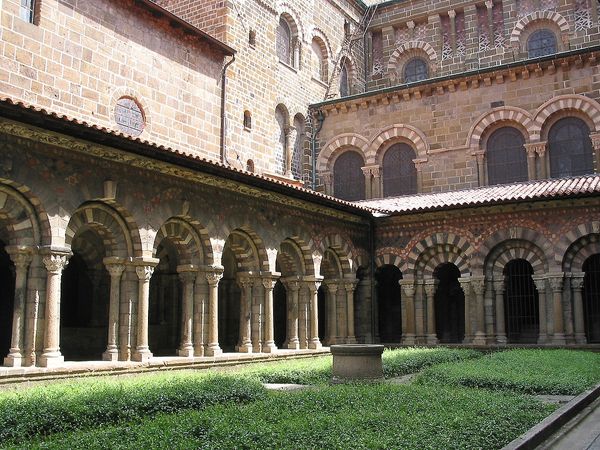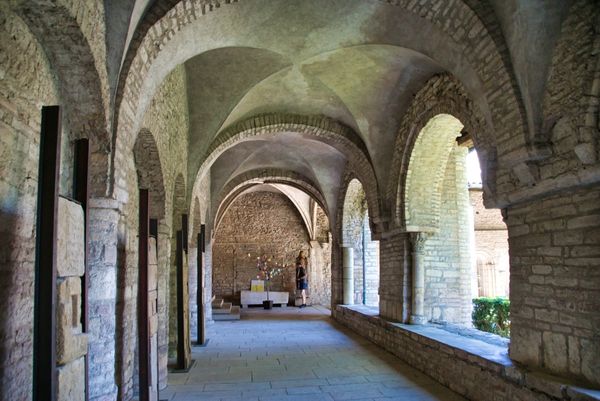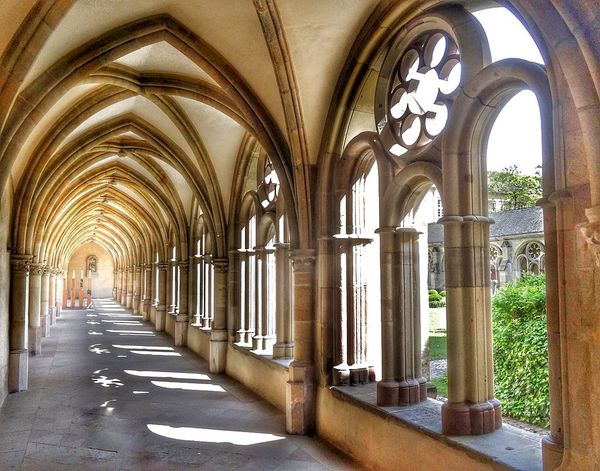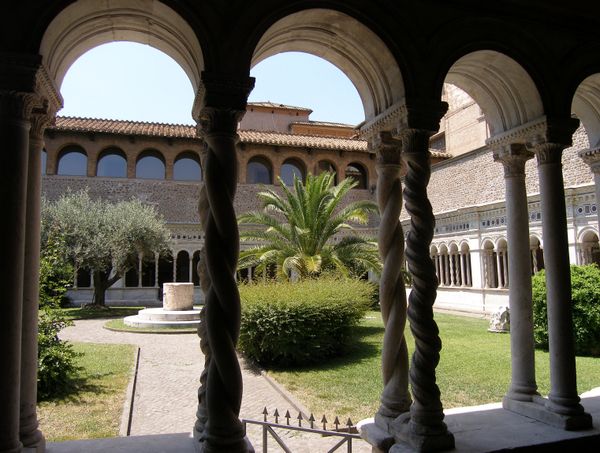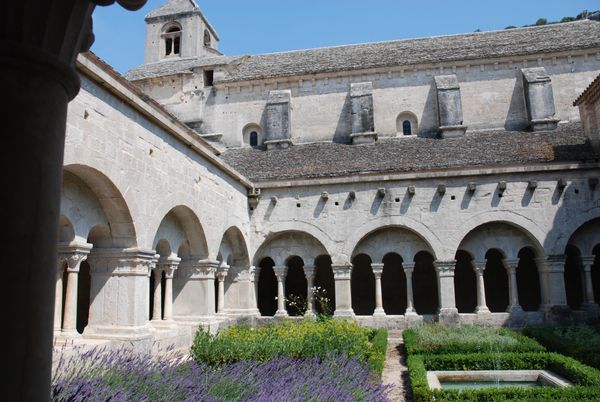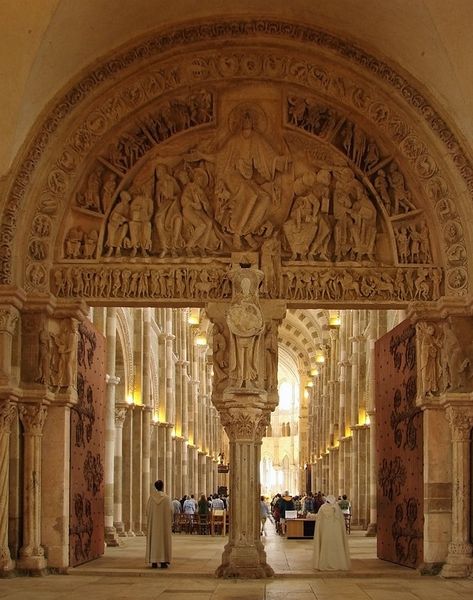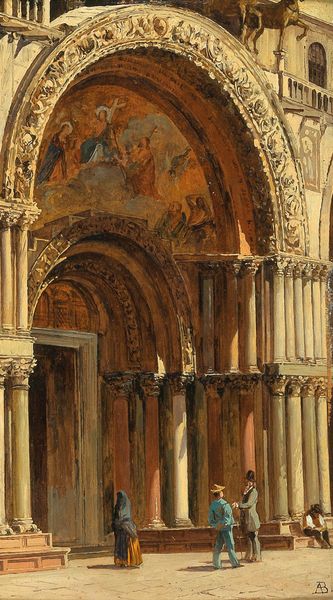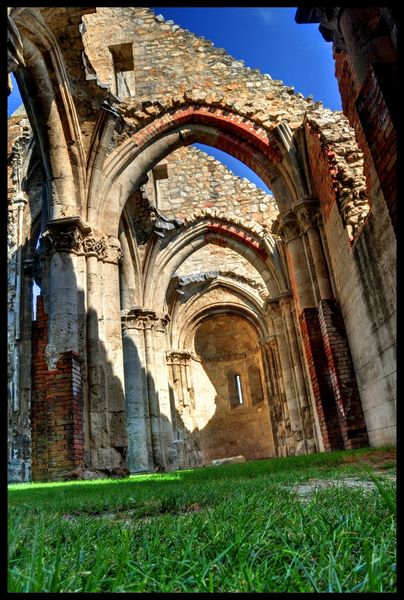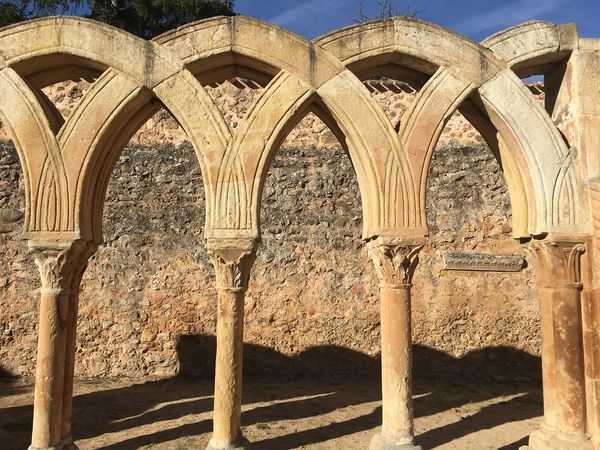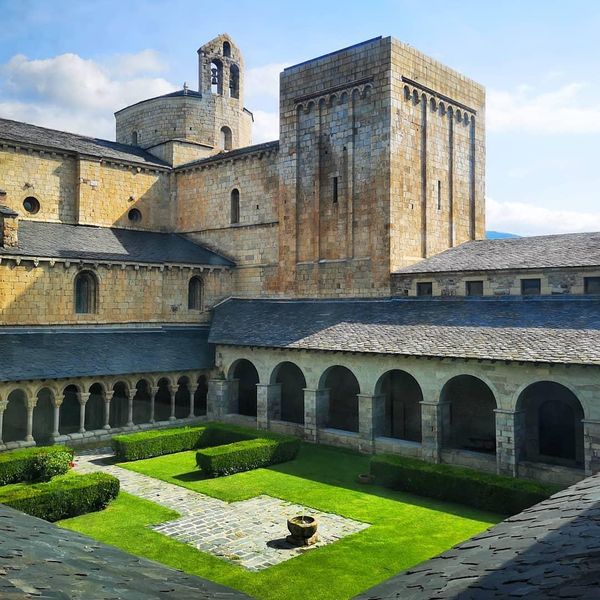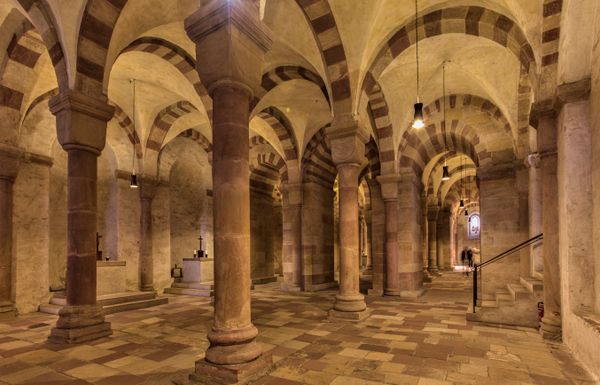
architecture
#
medieval
#
historic architecture
#
traditional architecture
#
romanesque
#
column
#
arch
#
architecture
#
historical building
#
building
Copyright: Public domain
Curator: Looking at this photograph, what first strikes you about the Abbey of Moissac, dating back to around 1060? Editor: A profound sense of peace. The light filtering through the arches, the repeating columns...it evokes a feeling of sanctuary, a place set apart. The regularity almost creates a visual chant. Curator: Indeed. Built during a period of significant Cluniac reform, spaces like this at Moissac were integral to monastic life. Cloisters provided a space for prayer, study, and reflection, distinct from the secular world. They served as a vital artery for maintaining monastic discipline. Editor: I notice the detailed carvings on the capitals of each column. Is there a symbolic language embedded within these details? What do they tell us about the monastic worldview? Curator: Absolutely. These capitals are not merely decorative; they are rich in symbolic imagery. During the Romanesque period, sculpture served as a crucial teaching tool for a largely illiterate populace, depicting biblical scenes, moral lessons, and complex allegories. They reinforced a particular moral and spiritual order within the physical architecture itself. The capitals at Moissac served as a vital tool in that process. Editor: It is really clever. Using something beautiful as a teaching aid. So this wasn't just about creating a space, but crafting a specific psychological and spiritual environment. What are some themes recurring in the decoration? Curator: You see a blend of Old and New Testament scenes alongside depictions of virtues and vices. Common themes would have included the lives of saints, stories of temptation, or warnings against heresy. Every aspect served to encourage vigilance, repentance, and adherence to monastic rule. Editor: The use of enclosed space is also so important, even crucial in defining a medieval sense of place. To be "within the cloister" was not just to be within four walls, but also to be enmeshed in that specific physical and mental environment. One can almost feel that psychological boundary looking at this photograph. Curator: Precisely. Looking at this space, considering its function, it prompts me to remember just how influential these abbeys were, politically and socially. They served as landowners, centers of learning, and major players in the medieval power structure, intimately entwined with broader socio-political events. Editor: To understand these arches and columns, you need more than an architectural analysis. We need an excavation of collective memory, the psychology of place, and also the very real and shifting world around these foundations. Curator: Yes, examining its history also unlocks for us its intended role and reception in medieval Europe.
Comments
No comments
Be the first to comment and join the conversation on the ultimate creative platform.

